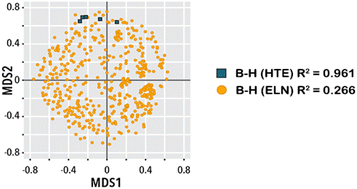On the use of real-world datasets for reaction yield prediction†
Abstract
The lack of publicly available, large, and unbiased datasets is a key bottleneck for the application of machine learning (ML) methods in synthetic chemistry. Data from electronic laboratory notebooks (ELNs) could provide less biased, large datasets, but no such datasets have been made publicly available. The first real-world dataset from the ELNs of a large pharmaceutical company is disclosed and its relationship to high-throughput experimentation (HTE) datasets is described. For chemical yield predictions, a key task in chemical synthesis, an attributed graph neural network (AGNN) performs as well as or better than the best previous models on two HTE datasets for the Suzuki–Miyaura and Buchwald–Hartwig reactions. However, training the AGNN on an ELN dataset does not lead to a predictive model. The implications of using ELN data for training ML-based models are discussed in the context of yield predictions.

- This article is part of the themed collection: 2023 Chemical Science HOT Article Collection


 Please wait while we load your content...
Please wait while we load your content...